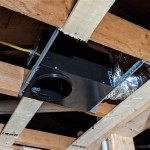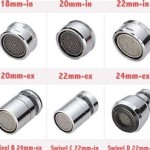How To Remove a Broken Bathroom Wall Tile
Removing a broken bathroom wall tile is a common home repair task that, while potentially messy, is manageable for the average homeowner. This article provides a step-by-step guide to safely and effectively removing a damaged tile without causing further harm to the surrounding tiles or wall structure. Proper preparation, the right tools, and a methodical approach are essential for a successful outcome.
The presence of broken tile not only detracts from the aesthetics of a bathroom but can also present safety hazards, particularly with sharp edges. Furthermore, damaged tile can allow moisture to penetrate the wall, leading to potential mold growth and structural deterioration. Addressing the issue promptly is, therefore, crucial for both cosmetic and functional reasons.
Before commencing the removal process, it is important to assess the extent of the damage and identify the type of tile and grout used. This information will assist in selecting the appropriate tools and techniques. Additionally, ensuring that replacement tile and grout are readily available is vital for completing the repair efficiently.
Safety is paramount throughout this process. It is essential to wear appropriate personal protective equipment, including safety glasses to protect the eyes from flying debris and gloves to shield the hands from sharp edges and chemicals. Adequate ventilation is also important, especially when using chemical solvents to soften the grout.
Gathering the Necessary Tools and Materials
A variety of tools may be required to remove a broken bathroom wall tile. The specific tools needed will depend on the type of tile, the type of grout, and the extent of the damage. However, a basic toolkit should include the following:
Safety Glasses: Crucial for protecting the eyes from flying tile shards and grout dust.
Gloves: Protect hands from sharp edges and potentially irritating grout removal chemicals.
Grout Removal Tool: A specialized tool designed to scrape away grout without damaging surrounding tiles. Oscillating multi-tools with grout removal attachments are also effective.
Utility Knife: Useful for scoring grout lines and prying up loose pieces of tile.
Hammer: For gently tapping a chisel or putty knife to break up the tile.
Chisel or Putty Knife: Used to carefully pry the tile away from the wall.
Old Screwdriver: Can be used for prying and scraping.
Drill with Tile Drill Bits: Useful for drilling holes in the tile to relieve pressure and create leverage points.
Dust Mask: Provides respiratory protection from dust and debris.
Shop Vacuum: For cleaning up dust and debris.
Grout Saw: A hand-held saw specifically designed for removing grout.
Grout Removal Chemical (Optional): Can soften stubborn grout, making it easier to remove.
Scraper: A broad, flat tool for removing adhesive residue from the wall.
Clean Cloths or Sponges: For cleaning surfaces.
Replacement Tile: Match the existing tile in size, color, and texture.
Grout: Match the existing grout color and type.
Tile Adhesive (Thin-Set Mortar): For adhering the new tile to the wall.
Notched Trowel: For applying tile adhesive evenly.
Grout Float: For applying grout smoothly and evenly.
Tile Spacers: To ensure consistent spacing between tiles.
Preparing the Work Area and Removing the Grout
Before starting the actual tile removal, preparing the work area is crucial for a clean and efficient process. Begin by covering the surrounding surfaces, such as countertops, sinks, and the floor, with drop cloths or plastic sheeting to protect them from dust, debris, and potential scratches. Secure the coverings with painter's tape to prevent them from shifting during the work. Proper preparation minimizes cleanup time and prevents damage to other bathroom fixtures.
The next step involves removing the grout surrounding the broken tile. This can be accomplished using a grout removal tool, a utility knife, or a specialized grout saw. A grout removal tool, often an oscillating multi-tool with a grout removal blade, is arguably the most efficient and precise method. Carefully run the tool along the grout lines, applying gentle pressure to avoid damaging the adjacent tiles. Take care to follow the contours of the grout lines and remove as much grout as possible without scratching the surrounding surfaces.
Alternatively, a utility knife can be used to score the grout lines. This method is best suited for softer grout or for removing small amounts of grout. Run the knife along the grout lines, applying firm pressure to cut through the grout. Repeat this process several times, gradually deepening the cut. Once the grout is sufficiently scored, use the knife to pry out the remaining grout. This method requires patience and precision to avoid chipping or scratching the surrounding tiles.
A grout saw is another option for removing grout. This tool is designed with a thin, abrasive blade specifically for cutting through grout. Hold the saw at a slight angle and run it along the grout lines, applying gentle pressure. Move the saw back and forth to grind away the grout. Be careful not to apply too much pressure, as this can damage the surrounding tiles. Periodically clean the blade with a wire brush to remove any accumulated grout dust.
For stubborn grout, a grout removal chemical can be used to soften it, making it easier to remove. Apply the chemical according to the manufacturer's instructions and allow it to sit for the recommended time. Once the grout has softened, use the grout removal tool, utility knife, or grout saw to remove it. Always ensure adequate ventilation when using chemical solvents.
After removing the bulk of the grout, use an old toothbrush or a small brush to remove any remaining debris from the grout lines. A shop vacuum can be used to clean up dust and debris from the work area. Thoroughly cleaning the grout lines is essential for effectively removing the broken tile and properly installing the replacement.
Removing the Broken Tile and Preparing the Surface
With the grout removed, attention can be focused on the broken tile itself. Proceeding with caution is crucial to prevent further damage to the surrounding tiles and the underlying wall. One method involves using a hammer and chisel, or a hammer and putty knife, to carefully break and pry the tile away from the wall. Start by placing the chisel or putty knife at the edge of the tile and gently tap it with the hammer. The goal is to create small cracks in the tile and gradually loosen it from the adhesive. Avoid using excessive force, as this can cause the tile to shatter and potentially damage the surrounding tiles.
Another technique involves drilling holes in the tile using a drill with a tile drill bit. Start by marking the center of the tile with a pencil. Use the tile drill bit to drill a hole through the tile, being careful not to apply too much pressure. Drill several holes in the tile, spacing them evenly apart. These holes will help to relieve pressure and weaken the tile, making it easier to break apart. Once the holes are drilled, use the hammer and chisel or putty knife to break and pry the tile away from the wall.
If the tile is particularly stubborn, a heat gun can be used to soften the adhesive behind the tile. Apply heat to the tile for a few minutes, being careful not to overheat it or scorch the surrounding surfaces. The heat will soften the adhesive, making it easier to pry the tile away from the wall. Wear gloves when handling the heated tile.
Once the tile has been removed, the underlying surface will likely have residual adhesive or thin-set mortar. This must be thoroughly cleaned before installing the replacement tile. Use a scraper or putty knife to remove the bulk of the adhesive. For stubborn residue, a chemical adhesive remover can be used. Apply the remover according to the manufacturer's instructions and allow it to sit for the recommended time. Then, use the scraper to remove the softened adhesive. Be sure to wear gloves and ensure adequate ventilation when using chemical solvents.
After removing the adhesive, clean the surface with a damp sponge or cloth to remove any remaining residue. Allow the surface to dry completely before proceeding with the tile installation. Inspect the underlying wall for any damage, such as cracks or holes. Repair any damage before installing the new tile. If the wall is uneven, apply a leveling compound to create a smooth surface for the tile.
Finally, dry-fit the replacement tile to ensure it fits properly. Use tile spacers to maintain consistent spacing between the tiles. Make any necessary adjustments before applying the adhesive. This step is crucial for ensuring a professional-looking finish.

How To Replace A Broken Tile

Easy Diy Guide On Removing Tiles From Walls Fantastic Handyman Au

How To Remove Replace One Bathroom Tile Ceramic Repair

Why Ed Tiles In Your Bathroom Are A Problem Shower Sealed

Preparing Walls For Tiling Removing Old Tiles Bathroom Guru

Tips On How To Remove Old Shower Tile Ugly Duckling House

How To Remove Replace Broken Tiles Eurotiles Bathrooms

Water Damage Behind Shower Tiles

How To Replace Ed And Broken Shower Tiles
Removing Broken Ceramic Wall Mount Soap Dishes Tile Advice Forums John Bridge







